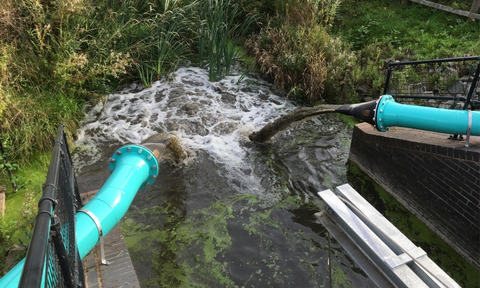Fish friendly pump stations help save a threatened species
26 Jun 2019

The European Eel is a species in rapid decline and pumps are part of the problem. Unless, that is, you pick the right product for the job…
The habitat of the European Eel (aka Anguilla Anguilla) extends from Iceland in the West Atlantic to Cyprus in the East Mediterranean, far south to North Africa and northwards to Norway’s Arctic coast.
Capable of growing over 1 metre long and with a record lifespan 150 years, they have for centuries been a food source – not least for the old London East End favourite, jellied eels.
But their popularity has led to overfishing and this has been compounded not only by pollution but also by the growth of pumps and hydroelectric dams.
Migration issues
In order to breed, eels must return to their migration grounds, in Europe a distance of approximately 6500 km, to the Sargasso Sea. Obstructions which impede their journey there and back, such as pumping stations, may be a contributing factor in their fall in numbers. These are estimated to have declined 90% since the 1970s.
Whiteacre Heath pumping station in Warwickshire is operated by Severn Trent Water. It was updated by Integrated Water Services (IWS) for the Environment Agency, in order to provide the sustainable management of flood risk to people, properties and infrastructure in Whitacre Heath.
The pumping station is located on a stream that feeds into the river Tame over a distance of ¾ mile.
Whitacre Heath was flagged up by the EA as needing to have an ‘Eel & Fish Friendly’ requirement with which the previously installed pump did not comply.
Such initiatives point the way forward for balancing process delivery with sustainable practice and species conservation
Investigation of the original installation showed a 200mm diameter rising main. At the required flowrate of 100 l/s this gave a velocity of 3.1m/s which is too high for eel & fish friendly operation. The EA and IWS were required to increase the rising main diameter to 250mm, along with the installation of fish friendly pumps in order to make the station compliant.
Hidrostal is the original inventers of the fish friendly pump, whose products were developed and patented in the 1960’s for use in the fisheries industry.
The pump was invented by the company founder, Martin Stähle, to transfer fresh fish from a boat with minimal damage, therefore guaranteeing their quality and appearance for market.
Sustainable economics
Hidrostal supplied two fish friendly pumps which were installed into the existing installation, delivering the exact same duty of 100 litres per second at 5m total head.
The new pumps are called into use at periods of very high rainfall, when the stream flow is isolated by penstocks to both reduce water levels up stream and reduce flood risk to several properties. When the penstocks are closed this causes the level to rise, so the pumps will then be used to transfer the water to the downstream side of the penstocks and away from the properties.
This is one specific attempt to aid the replenishment of the eel population in a part of the UK. Yet, when replicated elsewhere and combined with the numerous breeding projects involving numerous countries on the continent, such initiatives point the way forward for balancing process delivery with sustainable practice and species conservation.

